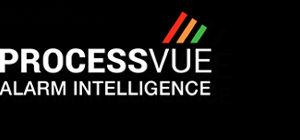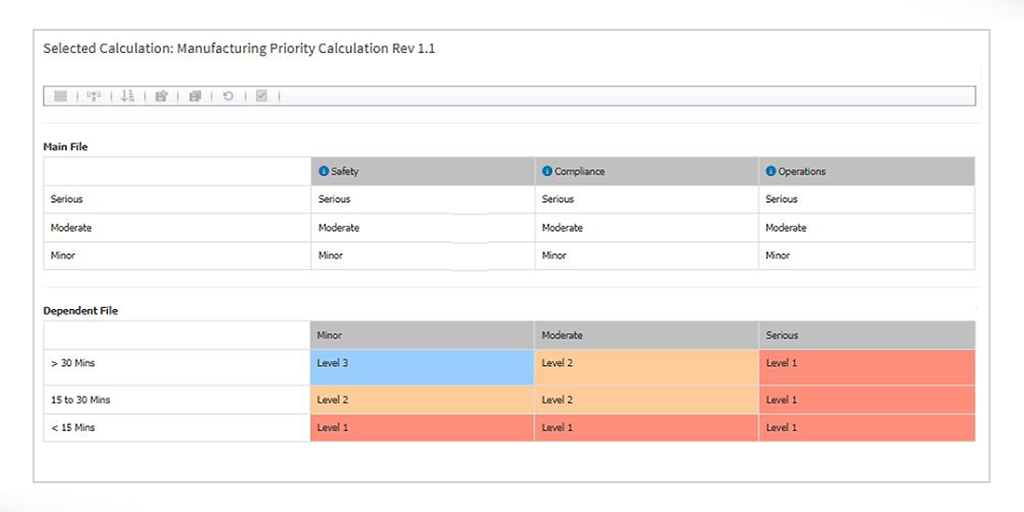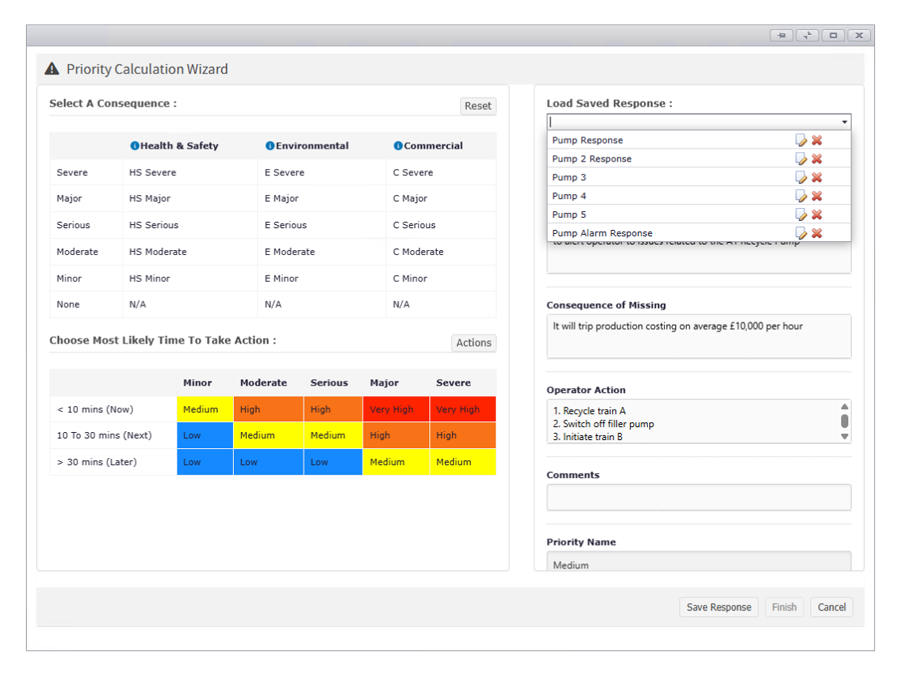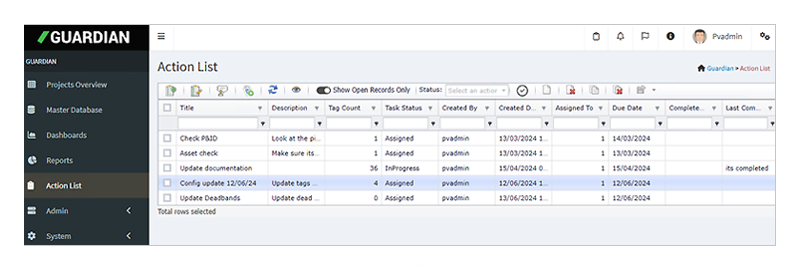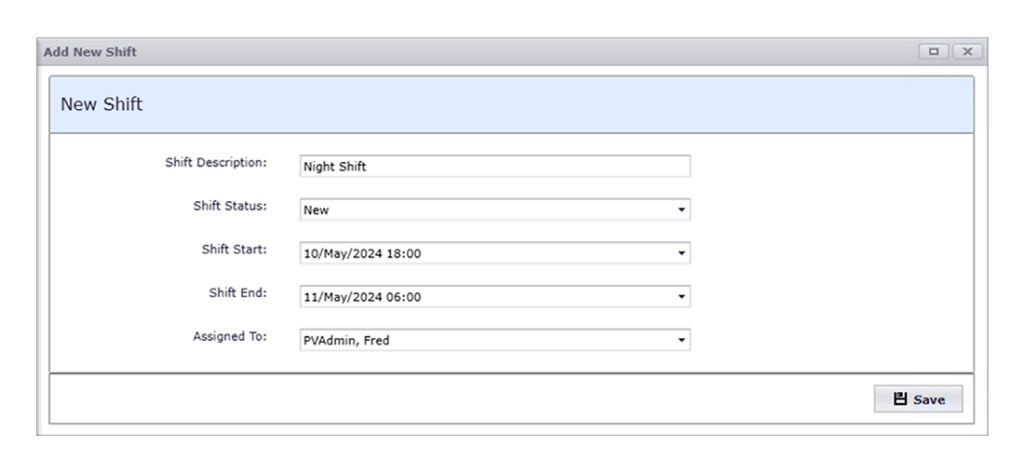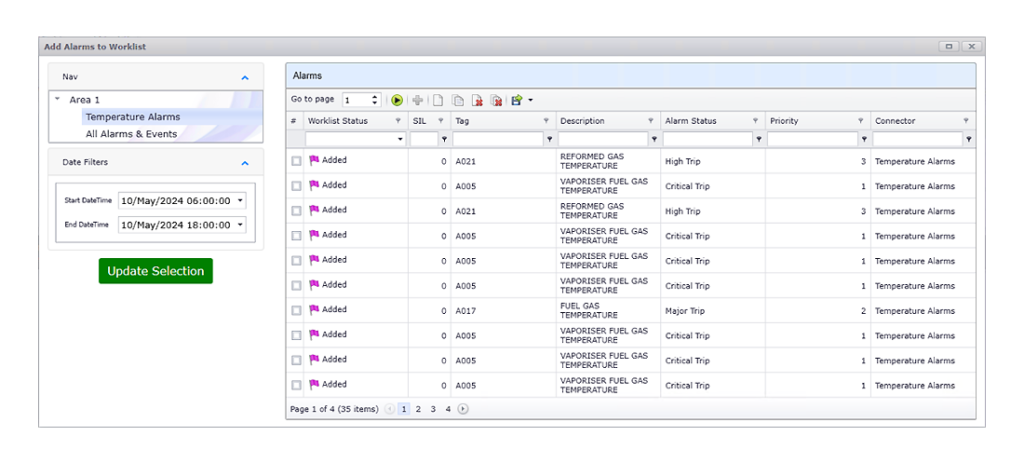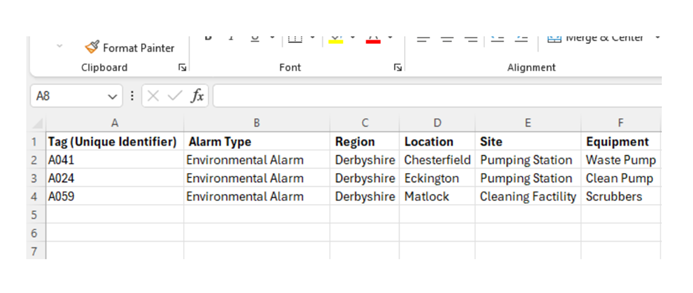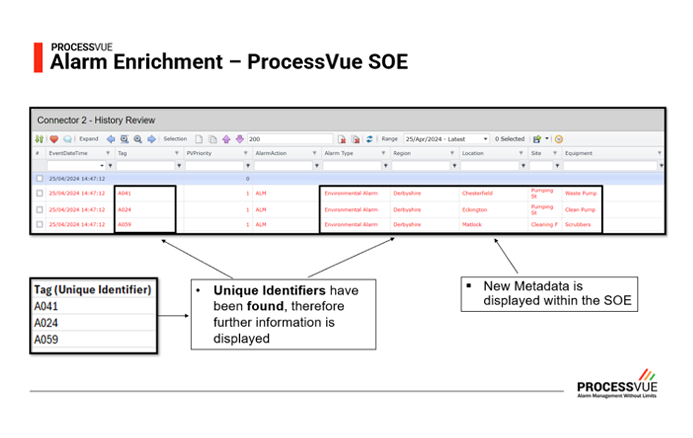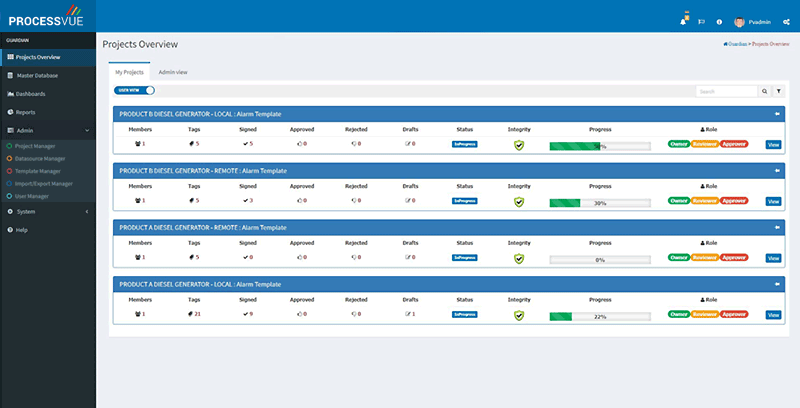Views
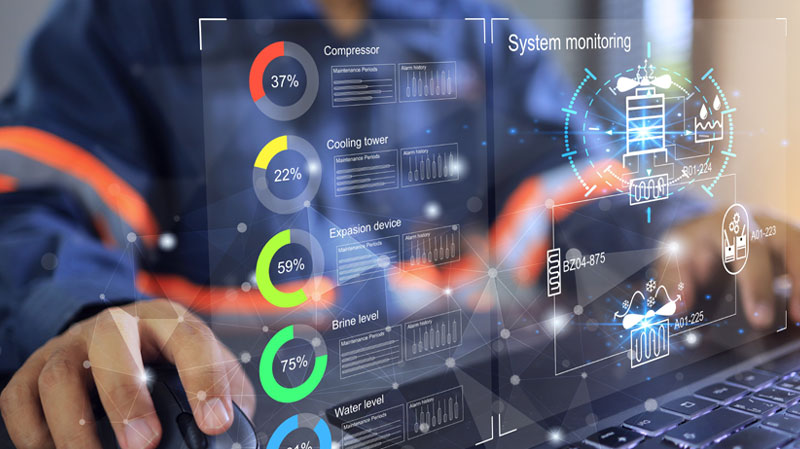
How ISA-18.2 Defines Alarm Rationalization and Documentation
According to the ANSI/ISA-18.2 Alarm Management Standards, rationalization is:
“The process to review potential alarms using the principles of the alarm philosophy, to select alarms for design, and to document the rationale for each alarm.”
In simple terms, alarm rationalization is about ensuring that alarms in industrial environments — like power plants, water treatment facilities, data centres and oil & gas — are meaningful, actionable, and correctly prioritised. It aims to improve operator effectiveness and plant safety.
The documentation aspect refers to recording the results of the rationalization process. Standards like ANSI/ISA-18.2 and IEC 62682 require that every rationalized alarm’s attributes are meticulously documented, from alarm type and priority to operator actions and consequences of inaction. Typical examples of fields that need to be documented include:
- Alarm type (e.g., high, low, off, on)
- Alarm priority (e.g., high, medium, low)
- Alarm class (e.g., safety, environmental, general)
- Alarm setpoint or condition (e.g., off-normal)
- Operator action (e.g., close valve, start pump)
- Consequences of inaction (e.g., equipment damage, environmental release)
- Probable causes (e.g., high temperature due to equipment failure)
- Maximum allowable response time (e.g., 30 seconds)
- Identification method (e.g., process variable crossing setpoint)
- Need for advanced alarm techniques (e.g., suppression logic)
ISA-18.2 Compliance: Why Excel Falls Short in Alarm Management
Based on the companies I have worked with over the years, in my experience most people who have already embarked on an alarm management improvement journey to help increase their level of compliance with ISA-18.2 standards or other available alarm management standards and guidelines (IEC:62682 and EEMUA191), will have at some point opted to use Microsoft Excel as their MADb of choice, and those who haven’t started will probably be considering it. Why? Because the chances are their company will have licenses of Excel on hand and may also have a copy of their alarm configuration in a CSV file format, making it easy to get started on rationalizing their alarms without incurring any financial burdens. But the truth is, Excel simply isn’t designed to handle the complexities of ISA-18.2 alarm rationalization. Let me explain.
Excel is not a Database
Excel uses a grid-based system, storing information in rows and columns.

While it works well for straightforward data entry, it becomes cumbersome when dealing with hundreds or thousands of alarm fields to manage. Need to copy non-adjacent fields? Excel will facilitate the copy, but it won’t let you paste them into equivalent non-contiguous fields, making simple tasks frustratingly difficult.
In contrast, a dedicated MADb like ProcessVue Guardian treats each field independently. You can copy any field to another with ease — assuming the data type matches — and even copy multiple fields simultaneously. Rationalising one alarm and applying its configuration across hundreds of others becomes a breeze, saving significant time and effort.

Copy One Alarm to Many
This is where a Master Alarm Database has the advantage, it’s a database. Which means your alarm configuration isn’t stored in contiguous cells. You can access and work with each field individually. You can copy any field of an alarm to any other assuming it’s the same data type (Guardian performs logic data checks). This makes it easy to copy configuration from one alarm to other similar alarms. In fact, ProcessVue Guardian lets you copy multiple fields during the copy process. This means that you can rationalize a single alarm and then copy as much of that alarm’s configuration as you want across as many alarms as you need. Imagine a scenario, where you have a hundred pumps with alarms to rationalise. You could rationalise one of them and copy the rationalised alarm configuration to the other 99 alarms saving you time and effort.
Bulk Edits Made Simple
With ProcessVue Guardian, bulk edits are another game-changer. Instead of scanning through Excel rows, trying to spot common fields across hundreds of tags, Guardian presents you with a list of shared fields and lets you update them all in a single pass. It’s faster, clearer, and far less prone to human error.
Alarm Object Definition Templates
When rationalising alarms and documenting the rationale for them in accordance with ISA-18.2 alarm management, it’s not uncommon to find similar types of alarms that could benefit from information you have already entered for previous alarms of the same type. If using excel you could attempt to copy the information from the earlier tag if you can find it, or you could keep a list of common responses and information that you can use to copy and paste the information into, again this a manual task and is prone to human error. ProcessVue Guardian allows you to create alarm object definitions which contain the information associated with specific types of alarms, such as a storage tank, motor, or pump. You can rationalise and document one of these alarms and save the information as an alarm template, this template can be used to automatically populate synergistic alarms as you carry out your rationalization, speeding up your ISA-18.2 alarm rationalization activities.
Alarm Segregation and User Roles
Alarm segregation is another area where a MADb shines. In Excel, restricting access to alarms for different systems or teams is difficult at best. When you grant access to an excel file, the user is granted full access to the information within. Sure, you can copy alarms to different worksheets, hide columns and tabs, but this is a manual process and applied globally introducing additional setup time and challenges to rationalization activities. ProcessVue Guardian addresses this with project-based segregation. Projects are created, tags are added and users assigned to roles (Reviewer or Approver) and can only access projects they are part of, ensuring better control and security.
Management of Change
Whilst alarm changes can be carried out through a medium like excel, there is no traceability of who made the change and why, or if it was even considered. If you want to record this information it must be done manually and for every change, this soon becomes unmanageable when dealing with large numbers of alarms. A robust approval workflow is built into ProcessVue Guardian. All changes to alarm configurations have to be approved before being deployed, this demonstrates that all changes are reviewed and considered. Reviewers make changes, Approvers sign them off, and every change creates a new draft that is stored in the database. This makes it easy to evidence that change management is in operation for all of your alarm configuration changes.
Audit Trails for Full Transparency
Audit trails provide a level of traceability that Excel simply cannot offer. ProcessVue Guardian logs every change, allowing you to track actions either by project or across the entire lifecycle of the alarm system.
Ensuring Consistency Through Alarm Philosophy
Another invaluable benefit of a Master Alarm Database like ProcessVue Guardian is its ability to embed sections of your alarm philosophy directly into the rationalization process. For example, priority methodologies can be incorporated into the system, ensuring that users have the information to rationalise alarms without having to consult the sites’ philosophy on alarms, and it ensures every user applies the same criteria when determining alarm priorities. This promotes a consistent approach to ISA-18.2 alarm management, regardless of who is performing the rationalization.

